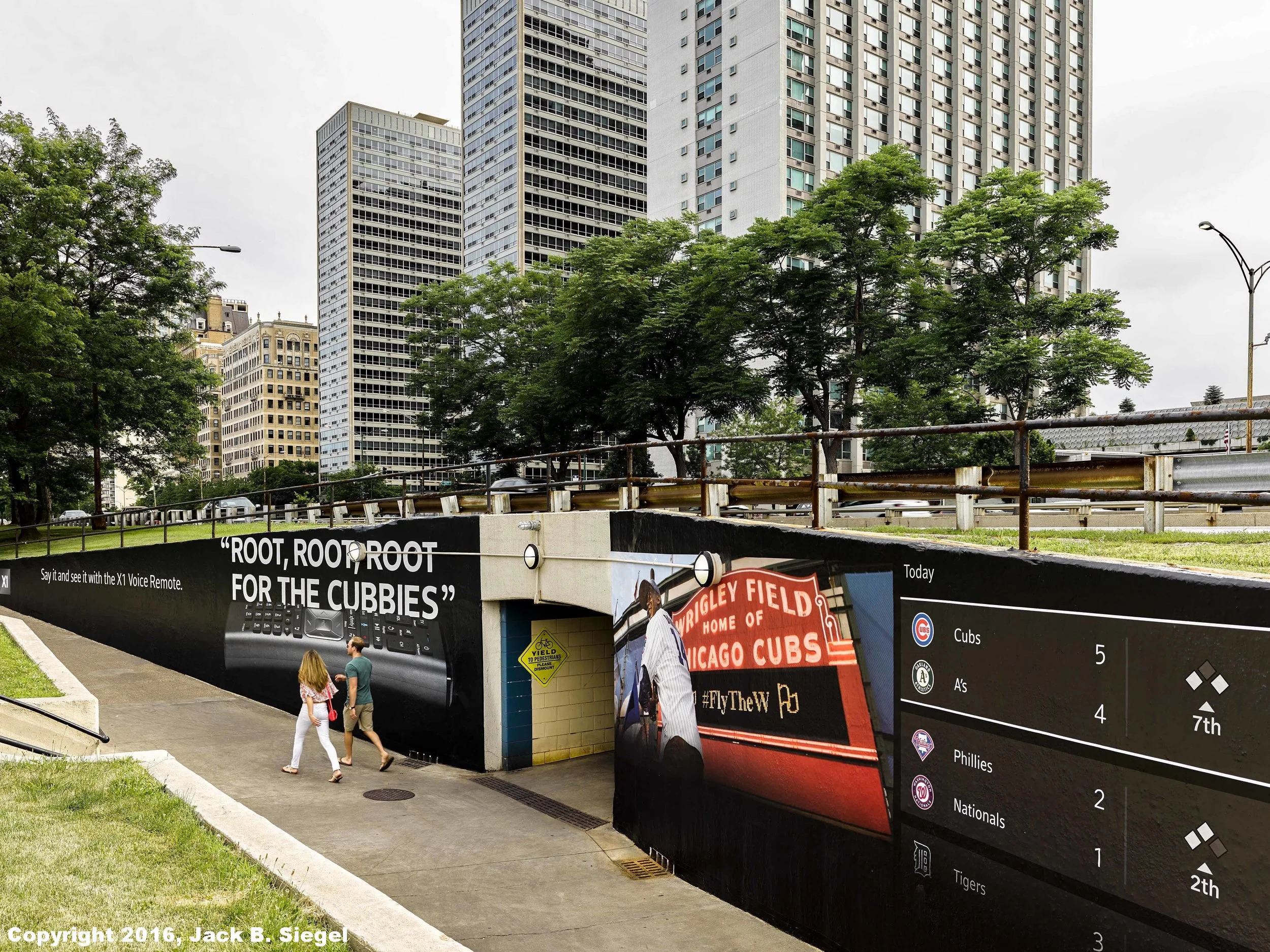It's all about the layers that exist in urban settings. Tokyo is known for them, but Chicago also has its share of layers.
All in Urban Landscapes
HICAG
[Click on photograph for commentary and additional photographs]
The Chicago Theatre is one of the most photographed buildings in Chicago, but most of the photographs feature the vertical script that spells out Chicago on the 6-story sign attached to the building. Built in 1921, the theatre was placed on the National Register of Historic Places in 1979. What many photographers miss is the archway above the marquee, with its elaborate carvings.
Up
While we waited for the return water taxi, we spent some time in Ping Tom Memorial Park. The willows lining the river have grown over the years that we have lived in Chicago.
The visual treat in this neighborhood is the Amtrak vertical life bridge that was built in 1915 (101 years old). It was built by the Pennsylvania Railroad. It doesn't look like it has been painted since then. I had never seen it in the "up" position, but on this trip, I watched it go upwards after a southbound Amtrak train rolled over it. It works just like an elevator.
Rosebud
Most Chicagoans are familiar with the Lyric Opera, but the so-called Lyric Opera House is really the Civic Opera House designed by architectural firm Graham, Anderson, Probst & White, which was also responsible for the design of the Merchandise Mart, the old Post Office, the Wrigley building, the Shedd Aquarium, and Union Station.
Turquoise
Among everyone's favorite buildings in Chicago, Bertrand Goldberg's Marina City still towers over the Chicago River. I will undoubtedly post many photographs of this mid-20th Century gem (designed in 1959, completed in 1964). It was the first post-war residential tower built in the United States in an effort to stop middle class flight from the city to the suburbs, a trend that after 60 years is in full reversal.
Sliver
The building is known for one colossal engineering mistake. It was originally clad is Carrara marble, but one piece fell off the building and an inspection found cracks in other pieces covering the building. In 1985, the owners tried to alleviate the problem by stainless steel straps to hold the marble in place. That apparently proved to be an unsatisfactory solution. Beginning in 1990, the Carrara marble was replaced with Mount Airy granite at an estimated cost of somewhere around $80 million.
Mojo
Well the citizens of Chicago must have succeeded in doing good things, because the "Go Do Good" mural has been removed. In its place, is now a colorful portrait of Chicago Blues icon Muddy Waters. To me, it is a far more appropriate image for the space and the City. Although I might have preferred a more subtle depiction of Muddy. It instantly brings to mind Muddy's controversial 1968 album on Chess entitled Electric Mud. Muddy did not need to go psychedelic. He was the one who paved the path that made a lot of the rock music of the late Sixties possible.
Clouds
Hot summer day. Imagine wasting money hiring a plane to fly an anti-abortion banner over the beach on such a beautiful day? Somebody did, and I suspect nobody paid much attention. It didn't matter whether they were pro or con. Hot summer day.
Underpass
This ad raises truth-in-advertising issues: The Cubs are playing the Mets today, but the sentiment is nice nevertheless. As of late, I have been thinking about two-level perspective, Kinda fun.
SUVs
Ah, but aren't these the same people I see driving Land Rovers around town. Must be, take a look at the boats that have docked. All it takes is three boats to block everyone's view. Baby, you're a rich man.
Grid
Chicago's Southside and northern Indiana may no longer be major producers of steel, but the network of bridges spanning the Chicago River reflect the area's industrial past. Standing under the Columbus Avenue bridge on the south bank of the Chicago River looking up.















